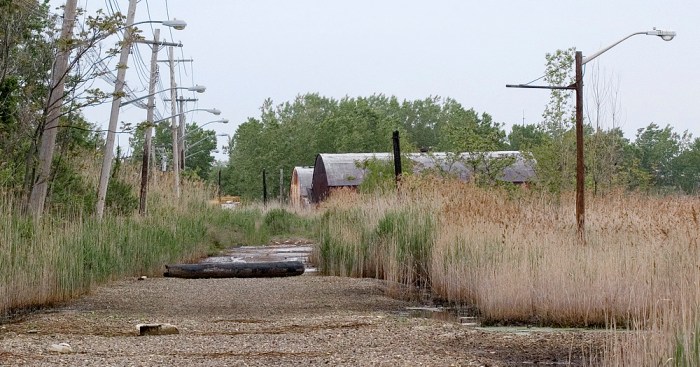Three 19th-century College Point buildings have been completely or partly demolished in the past two weeks, with little notice. Local preservationists blame a wave of development hitting the north Queens peninsula and the lack of upkeep on historic locations.
Last week, developers razed the Stage Coach House, which dated back to 1853 and served as a station for transferring people to and from downtown Flushing. Wrecking the house will now give developers corner property and land to the right to build.
Also last week, the Boker Court Mansion on 120th Street had its top story demolished. The building, which dates to 1855 and served as a hotel, a boys military school and rooming house, is expected to be completely torn down in the next few weeks.
A host of houses are expected to be built on both properties.
The two wrecked buildings follow the demolition of Lesemans Academy on 119th Street in the beginning of February. The academy sprung up after the Civil War and grew to statewide recognition
"I wish I had the resources to save them all," said Susan Brustmann, executive director of the Poppenhusen Institute, about the demolished buildings.
A College Point resident and preservationist, Brustmann was instrumental in saving the Poppenhusen Institute in 1970. At the time, the institute, which was built in 1868 and, among other functions, had served as a town hall, jail and bank, had been designated a national and city landmark. But the owners, unable to support the property, claimed hardship and put it up for sale, which made the building vulnerable to development. Brustmann held protests and successfully rallied to save the building.
Brustmann said that the same effort is needed to save disappearing historical treasures in College Point.She and fellow preservationists attribute the problem to lax zoning laws, which allow developers to buy a single-family home, demolish it and replace it with multiple houses. Brustmann said once development begins it has a domino effect on homeowners.
"People panic or get discouraged because they see all this building and a lot of congestion," said Brustman, adding most feel defeated and sell.
Fred Mazzarello, president of the College Point Board of Trade, also attribute the disappearance of historic buildings to poor maintenance.
"They were never really kept up too well," said Mazzarello. "Most of them were pretty well run down."
With the lucrative prospect of building multiple homes on a current single-family site, developers, he said, make very persuasive offers to homeowners.
"Developers are going around offering all kinds of humungous money," Mazzarello said. "Plus, the people who own the homes today dont have any attachment to the past."
Brustman said that the citys Landmarks Preservation Commission needs to step in and designate parts of College Point a historic district or give buildings landmark status. Both titles would help prevent overdevelopment and preserve important buildings.
But, getting Landmarks to make designations is easier said than done.
Twenty years ago, said Brustman, she had taken Landmarks on a tour of College Point. Landmarks was considering the area for designation, but, she said, nothing ever came of it. Landmarks placed it on the back burner.
"Its just more of the same, where very historic and important properties are being destroyed because Landmarks has refused to designate or even consider them," said Paul Graziano, an urban planning consultant who has advocated the city agency to designate more neighborhoods in Queens a borough, he said, has been long neglected.
Brustman and Graziano will be meeting this week. She said her goal is to hold information sessions on the pros and cons of historic district designation, and how to advocate for it.
Brustman expects an uphill battle, saying "We really have to cry loud to get attention here."


































